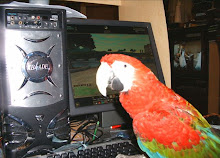Do you ever get the feeling that the galaxy is spinning out of control and the best thing to do is just hang on for the ride? Well guess what, that feeling may be more accurate than you might think.
Scientist using the Very Long Baseline Array (VLBA) have discovered that our Milky Way galaxy is spinning about 100,000mph faster than previously thought. According to the findings, our solar system is moving through space at a respectable 600,000mph. To give that some sort of perspective, the average distance between the Earth and the Moon is 250,000 miles and it took the Chandrayaan-1 probe took 2 weeks to travel to the moon and the Apollo Astronauts did it in about 3 days.
They also found that our galaxy is about 50% more massive that what was previously estimated. This puts the Milky Way about even with Andromeda in terms of mass. This also means that our chances of colliding with another galaxy has increased as well. Why is that you might ask? Well, remember that gravity is the result of mass. The higher the mass, the more gravity there is and the farther away it's influence is felt (thanks to the Inverse Square Law).
So, where does this extra mass come from? Good question and one that's at the forefront of Astrophysics at the moment. We think it has to do with something called Dark Matter. Dark Matter eh?, sounds like some sort of Star Wars baddie doesn't it? Well, the truth is, it's a place holder. A way of describing something that we can't directly observe. Dark Matter may be something as simple as dust particles that don't emit or reflect very much light. It might also be something exotic and brand new to physics. Scientist can see what Dark Matter does (speeding up the expansion of the universe is one of the results that are being studied) but so far they haven't seen the stuff and until they do, the placeholder name will remain.
As amazing as these discoveries are, the tool that was used is just about as mind boggling. The VLBA is one incredible machine. You may have heard it said that in astronomy, aperture is king. Aperture is simply a measurement of how much information (in terms of the electro-magnetic spectrum) a telescope can collect. The larger the aperture, the more data can be collected and the farther the scope can look. Most research telescopes have apertures described in terms of metres or feet but the VLBA might be described in terms of miles! VLBA is made up of 10 radio telescope dishes spread from Hawaii to St. Croix Virgin Islands. Each telescope dish is 25 metres across and because all ten are linked together and work as a single unit, the aperture of the VLBA is about the same as the diameter of the Earth. It can resolve objects in space about 50 times better than the Hubble Space Telescope.
Pretty cool isn't it?!
Here's the original report!
And to the VLBA
Thank The JWST For Confirming The First Runaway Supermassive Black Hole
-
[image: This artist's illustration shows a runaway SMBH that was ejected
from its host galaxy. As it travels through space it generates a bow shock
in fr...
1 hour ago





0 comments:
Post a Comment